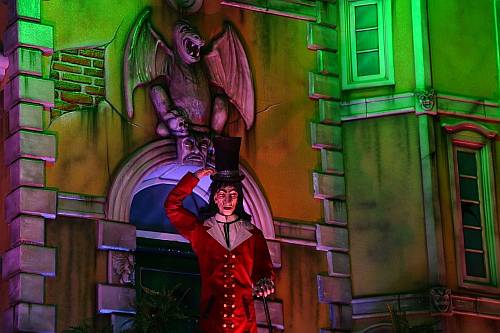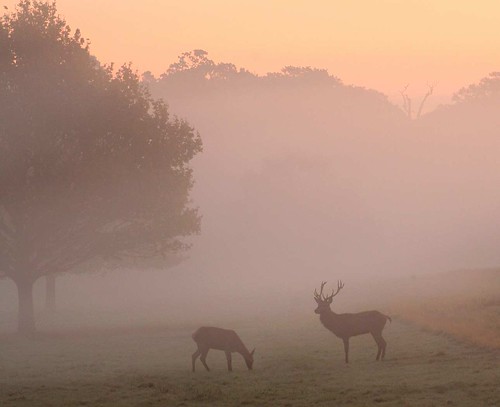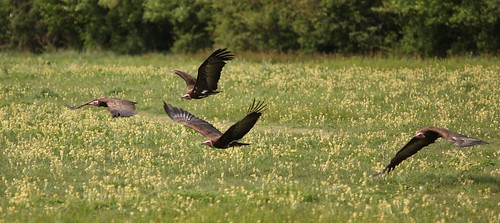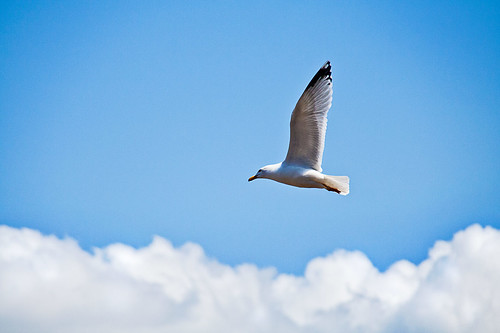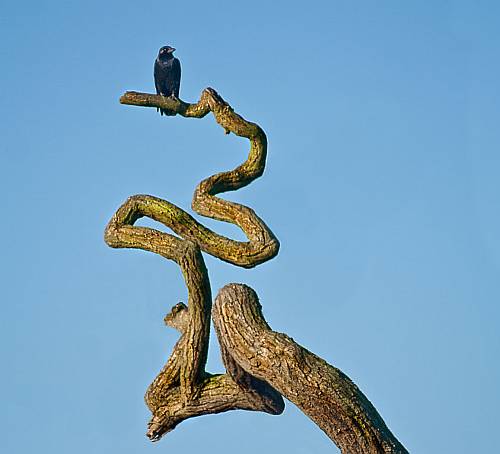
• Contorted •
Wait for the right moment. What would there be in this picture without the bird?
Every great shot is a splendid moment in time
A significant difference between an accomplished photographer and a “snapper” is the insight to wait. Realising a potential shot at the right moment is the supreme judgement call. Microseconds or months – it makes no difference. Understanding the visualisation and committing to the time element are skills great photographers cultivate.
Seeing the moment
Once the idea comes to mind you have the basic material for the most important moment in the life of a great image – it’s visualisation. While visualising the shot you have to consider all the details including the timing. The image above would have been very uninteresting if not for the bird. I first saw this shot from a quarter mile away and no bird. After watching the bird alight and fly several times I worked closer and waited. The capture at that moment made the shot. Knowing the moment is a critical visualisation skill.
How to wait…
Watchful waiting: Sometimes your visualisation has shown you the shot you want to make. However, conditions have to be right. The right people, light, weather, things… it all has to come together and you need to watch for the right time. Could be a long time, but you can wait.
Lying in wait: You have seen the shot. You know it is going to come together. You are there, waiting for that one piece to fall into place. A person to walk into the right space; a car to drive onto the ferry; a skier to make the jump… it will happen! Wait for it, wait for it: click!
Passive waiting: You have in mind a shot. It is an agonising itch. You are not sure how, when or where it is going to happen. You just have to wait for things to start coming together. Maybe you need to find the right location; perhaps you have not seen the right fashion accessory; need access to the right car? This is a sort of one-shot project. At some time you will know the time is right and you can then work to put together the shot. I have three of these in mind right now… one day; one day.
 Photokonnexion tips by email
Photokonnexion tips by emailEnjoying this article? Please sign up for our
daily email service.
Find out more…
Repeat waits: Often the situation is wrong. I have some landscape shots I want to make. I know they are right, but I have to get the right weather. It is a 250 mile drive, so I have to make an effort to get there and wait. So far one image has eluded me 6 times. I will try again… and again.
Active waiting: Every street photographer knows this one. You are observing, hunting, seeing, looking for the moment, the right move, just the right character. Then suddenly the light and the person and the move all happen… the decisive moment – click!
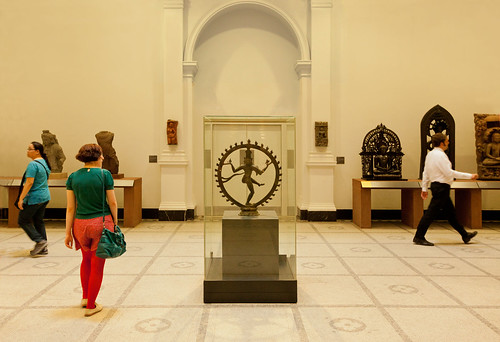
• Coming And Going •
Click image to view large
• Coming And Going • By Netkonnexion on Flickr ![]()
Constructive waiting: You have your idea. You have visualised every detail. Now you need to put it together. You need to buy a particular candle; to find a specific book; to contrive just the right mood and lighting. Then, after a few days, it all comes together and the production can start. People, props, positioning – perfect… click. Aaaah!
Wait! There’s more…
There are bound to be other types of “wait”. You may call them something different to me. Whatever, I think you can see, waiting is not only a critical aspect of your visualisation… it is also a fundamental part of the life of your shot.
Start Photokonnexion email subscription now!
Photokonnexion Photographic Glossary – Definitions and articles.
Three photography lessons from this one weird old trick!
Time – 5 Essential Tips For Photographers
We would love to have your articles or tips posted on our site.
Find out more…
Write for Photokonnexion.



